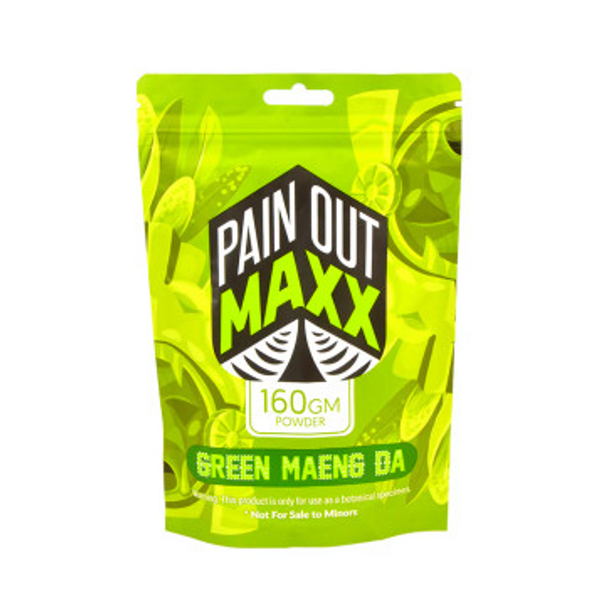KRATOM POWDER has become one of the most talked-about botanical supplements in recent years. This fine, green powder comes from the leaves of the Mitragyna speciosa tree, native to Southeast Asia. For centuries, local communities have used these leaves for their unique properties, and now kratom powder has found its way into the global market.
Understanding what kratom powder is, how it works, and what to expect can help you make informed decisions about this fascinating botanical product. This comprehensive guide covers everything you need to know about kratom powder, from its origins to proper usage guidelines.
What Is KRATOM POWDER?
KRATOM POWDER is made by carefully drying and grinding the leaves of the kratom tree. The Mitragyna speciosa tree grows naturally in countries like Thailand, Malaysia, Indonesia, and Papua New Guinea. Workers harvest mature leaves, dry them using traditional methods, then grind them into the fine powder that consumers know today.
The powder typically has a distinctive green color and a slightly bitter taste. Different processing methods can create variations in color, ranging from bright green to darker, more brownish tones. The quality of kratom powder depends heavily on factors like:
- Harvesting techniques
- Drying methods
- Storage conditions
- Processing equipment
- Source location
The Science Behind Kratom
The active compounds in kratom powder are called alkaloids. The two main alkaloids are mitragynine and 7-hydroxymitragynine. These naturally occurring compounds interact with receptors in the human body, which explains why people report different effects from using kratom powder.
Research into these alkaloids is ongoing, with scientists working to understand exactly how they function. What we know is that the concentration of these alkaloids can vary significantly between different kratom powder products, depending on factors like the age of the leaves and processing methods.
Types of KRATOM POWDER
The world of kratom powder includes several distinct varieties, each with unique characteristics. Understanding these differences helps consumers choose the right type for their needs.
Strain Classifications

| Strain Type | Color | Characteristics | Popular Varieties |
|---|---|---|---|
| Red Vein | Reddish stems/veins | Most mature leaves | Red Bali, Red Thai, Red Maeng Da |
| Green Vein | Green stems/veins | Medium maturity | Green Malay, Green Borneo, Green Indo |
| White Vein | White stems/veins | Youngest leaves | White Sumatra, White Vietnam, White Horn |
Regional Varieties
Different growing regions produce kratom powder with distinct profiles:
Indonesian Kratom: Known for consistency and availability. Popular varieties include Bali, Borneo, and Indo strains.
Thai Kratom: Historically significant but now mostly cultivated elsewhere due to legal restrictions in Thailand.
Malaysian Kratom: Includes the popular Malay strain, known for its balanced profile.
Vietnamese Kratom: A newer addition to the market with unique characteristics.
Processing Methods
| Processing Type | Description | Result |
|---|---|---|
| Standard Drying | Traditional sun or shade drying | Classic kratom powder |
| Enhanced | Additional processing steps | Higher alkaloid concentration |
| Extract | Concentrated alkaloids | More potent powder |
How KRATOM POWDER Works
When someone consumes kratom powder, the alkaloids are absorbed into the bloodstream and travel throughout the body. The primary alkaloids interact with various receptor systems, particularly opioid receptors, though the interaction is complex and different from traditional opioids.
The effects people report from kratom powder can vary widely based on several factors:
- Dosage: The amount consumed significantly impacts the experience
- Individual tolerance: Each person responds differently
- Strain type: Different varieties produce different effects
- Quality: Higher quality kratom powder tends to be more consistent
- Consumption method: How the powder is taken affects absorption
Factors Affecting Potency
The potency of kratom powder isn't consistent across all products. Several factors influence how strong a particular batch might be:
Leaf maturity plays a crucial role. Older, more mature leaves typically contain higher concentrations of alkaloids. Harvesting timing also matters – leaves picked at optimal times tend to produce better kratom powder.
Processing and storage methods significantly impact final product quality. Proper drying techniques preserve alkaloid content, while poor storage can degrade the powder over time.
Usage Guidelines for KRATOM POWDER
Proper usage of kratom powder involves understanding dosage, timing, and consumption methods. New users should always start with smaller amounts to assess their individual response.
Dosage Considerations
Most experienced users suggest starting with very small amounts – typically 1-2 grams of kratom powder. This allows individuals to gauge their sensitivity before gradually adjusting as needed.
Common dosage ranges include:
- Beginner range: 1-3 grams
- Moderate range: 3-5 grams
- Higher range: 5-8 grams
- Heavy range: 8+ grams
Remember that individual responses vary significantly, and what works for one person may not work for another.
Consumption Methods
There are several ways to consume kratom powder:
Toss and Wash Method: Taking the powder directly and washing it down with liquid. This method provides quick absorption but can be challenging due to the bitter taste.
Mixing with Beverages: Stirring kratom powder into juices, smoothies, or other drinks helps mask the flavor while providing the same effects.
Capsule Form: Some people prefer to put kratom powder into empty capsules for easier consumption, though this may slow absorption slightly.
Tea Preparation: Brewing kratom powder into tea is a traditional method that some find more palatable.
Timing and Frequency
The timing of kratom powder consumption can affect the experience. Taking it on an empty stomach typically results in faster absorption, while consuming it with food may slow the onset but potentially extend the duration.
Most users recommend waiting at least 4-6 hours between doses to avoid building tolerance too quickly. Regular breaks from kratom powder use are also commonly suggested by experienced users.
Quality and Safety Considerations
Not all kratom powder products are created equal. Quality can vary dramatically between different suppliers and processing facilities.
What to Look for in Quality KRATOM POWDER
High-quality kratom powder typically has these characteristics:
- Fresh, vibrant color appropriate for the strain type
- Fine, consistent texture without large stems or debris
- Strong, earthy aroma that isn't musty or off-putting
- Proper packaging that protects from light and moisture
Third-Party Testing
The best kratom powder vendors invest in third-party laboratory testing. These tests check for:
- Alkaloid content and potency
- Heavy metals like lead and mercury
- Microbial contamination
- Pesticide residues
- Adulterants or foreign substances
Always choose vendors who provide current lab results for their kratom powder products.
Storage Best Practices
Proper storage helps maintain kratom powder quality over time:
- Keep in airtight containers away from light
- Store in cool, dry places to prevent moisture damage
- Avoid exposure to extreme temperatures
- Use vacuum-sealed bags for long-term storage
Legal Status and Regulations
The legal status of kratom powder varies significantly across different jurisdictions. In the United States, kratom remains legal at the federal level, though several states and municipalities have implemented their own restrictions.
Current US Legal Landscape
As of 2024, kratom powder is legal in most US states, but banned or restricted in:
- Alabama
- Arkansas
- Indiana
- Rhode Island
- Vermont
- Wisconsin
- Several cities and counties in other states
Always check local and state laws before purchasing or using kratom powder, as regulations can change frequently.
FDA Position
The FDA has not approved kratom powder for any medical uses and continues to study its safety profile. The agency has issued warning letters to companies making health claims about kratom products.
Industry Standards and Best Practices
The kratom powder industry has developed various standards to ensure quality and safety. Organizations like the American Kratom Association (AKA) promote Good Manufacturing Practices (GMP) among vendors.
GMP Standards Include:
- Regular facility inspections
- Proper handling and processing procedures
- Contamination prevention protocols
- Accurate labeling requirements
- Batch tracking and documentation
Choosing GMP-certified vendors helps ensure you're getting quality kratom powder.
Potential Considerations and Precautions
Like any botanical supplement, kratom powder use comes with considerations that users should understand.
General Precautions
- Start with very small amounts to assess individual tolerance
- Avoid combining with alcohol or other substances
- Don't use while driving or operating machinery
- Pregnant or nursing women should avoid kratom products
- Those with medical conditions should consult healthcare providers
Tolerance and Dependence
Regular use of kratom powder may lead to tolerance, requiring larger amounts to achieve the same effects. Some users also report withdrawal symptoms when stopping after regular use.
Taking regular breaks from kratom powder use may help prevent tolerance buildup.
Drug Interactions
KRATOM POWDER may interact with certain medications. Anyone taking prescription drugs should consult with healthcare providers before using kratom products.
The Future of KRATOM POWDER
The kratom powder industry continues evolving as research expands and regulations develop. Scientists are conducting more studies on kratom alkaloids, while advocacy groups work to establish comprehensive regulatory frameworks.
Research Developments
Current research focuses on:
- Understanding alkaloid mechanisms of action
- Studying potential therapeutic applications
- Investigating safety profiles
- Developing standardized testing methods
Industry Growth
The kratom powder market has grown significantly in recent years, with more vendors, products, and consumer awareness. This growth has led to:
- Improved quality standards
- Better testing protocols
- More product variety
- Enhanced consumer education
Conclusion
KRATOM POWDER represents a fascinating botanical product with a rich cultural history and growing modern following. Understanding the different types, quality indicators, usage guidelines, and legal considerations helps consumers make informed decisions.
Whether you're curious about kratom powder or considering trying it, remember that quality matters significantly. Choose reputable vendors who provide lab testing, follow proper storage guidelines, and always start with small amounts to assess your individual response.
The world of kratom powder continues evolving as research advances and the industry matures. Staying informed about developments in science, regulation, and quality standards ensures you can navigate this botanical landscape safely and effectively.
As with any supplement, responsible use and careful research are key to a positive experience with kratom powder. Take time to understand what you're consuming, know your local laws, and prioritize quality when selecting products.
Frequently Asked Questions
Q: How long does kratom powder last when stored properly? A: When stored in airtight containers away from light and moisture, kratom powder can maintain its quality for 1-3 years. However, potency may gradually decrease over time.
Q: Can I mix different strains of kratom powder together? A: Yes, many users create custom blends by mixing different kratom powder strains. Start with small amounts to test how different combinations affect you.
Q: What's the difference between kratom powder and kratom capsules? A: Kratom powder and capsules contain the same material – capsules simply provide a convenient way to consume pre-measured amounts without tasting the bitter flavor.
Q: How can I tell if my kratom powder has gone bad? A: Signs of degraded kratom powder include musty odors, color changes, clumping from moisture, or visible mold. Fresh powder should have an earthy aroma and consistent texture.
Q: Is it better to take kratom powder on an empty stomach? A: Taking kratom powder on an empty stomach typically results in faster absorption and more noticeable effects, though some people prefer taking it with light food to reduce potential stomach discomfort.
Q: Why do different batches of the same kratom powder strain seem different? A: Natural variations in leaf maturity, growing conditions, harvest timing, and processing methods can cause differences between batches of the same kratom powder strain.
 US Dollar
US Dollar
 Australian Dollar
Australian Dollar
 Canadian Dollar
Canadian Dollar






